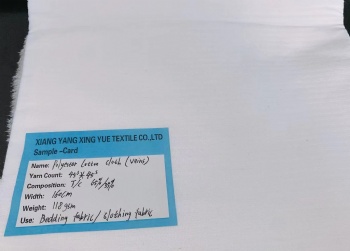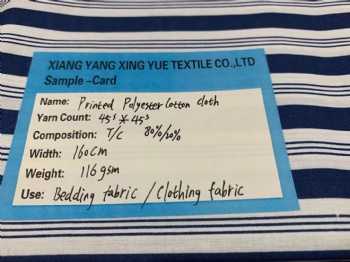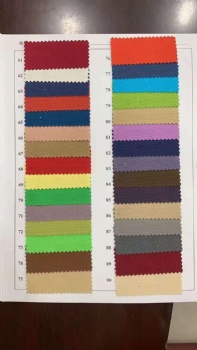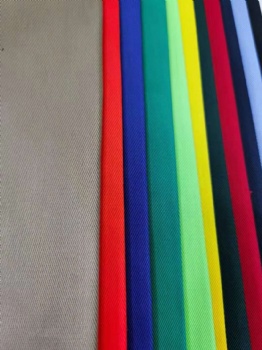News
Current situation and trend of textile industry at home and abroad
1、 Current situation and development trend of international textile industry
The textile industry originated in Britain and then transferred to the United States and Europe. In the 1950s and 1960s, Japan became the main textile producer at that time. In the 1970s, the textile focus shifted to South Korea, Singapore and other Southeast Asian countries.
Since the 1980s, due to low labor cost, sufficient supply and balanced development of upstream and downstream, the textile industry in China and Southeast Asia began to develop rapidly. Especially after the 1990s, developed countries such as Europe and the United States have basically stopped large-scale cotton textile industrial production due to industrial structure adjustment and increasing labor cost load, which further promoted the development of textile industry in China and Southeast Asia. In the new century, the development trend of the world textile industry presents the following obvious characteristics:
1. Differences in regional structural changes of textile industry. The transnational flow of capital, technology, information and other production factors in the world textile industry has always been transferred around the comparative advantages of labor resources and industrial upstream and downstream layout. The shift of the focus of the world textile industry will inevitably lead to major changes in the textile regional structure all over the world. In order to reduce labor costs and develop high-tech textile equipment, some production capacity in developed countries such as Europe, America and Japan has been transferred to the third world. At present, western developed countries have shifted from early labor-intensive industries to capital and technology intensive industries. The focus of the world textile industry is constantly shifting to Asia. China and India have accounted for nearly half of the world's total spindles, and an Asian cotton textile production center centered on China and India has been formed. In recent years, textile enterprises in Pakistan, Indonesia, Vietnam and other Southeast Asian countries rely on their high labor quality and low labor cost advantages, adopt OEM development mode, continuously improve their deep processing capacity, form a large market scale, and are becoming the main competitors of China's cotton textile products in the international market.
2. Technological innovation and information application are accelerating. Great changes have taken place in the production technology of the world textile industry in the 20th century, with the development of electronic computer technology, CAD aided design, ERP enterprise resource planning and PDM Product data. With the application of high and new technologies such as management system, the level of textile technology has been continuously innovated, and the technical content of textile industry has been significantly improved. The development of information network technology accelerates the circulation process of goods such as purchase, sales and storage of clothing enterprises, improves the market adaptability of clothing enterprises, and makes the production, design and management of modern clothing industry more modern. The textile industry presents a new situation of "four high and one new" with high speed, high automation, high output, high quality and new technology. Since the 1990s, the garment industry in developed countries and newly industrialized countries has turned to the development of high value-added garment industry dominated by high and new technology.
3. Global textile and garment trade is growing rapidly and occupies an important position in international commodity trade. The industrial chain dependence of developing and developed countries is increasing. As the main consumer market of the world's cotton textile final products, the United States has greatly increased the supply capacity of cotton textile consumption through the adjustment and upgrading of the cotton textile industry and the development of new textile technologies in recent years. In the North American Free Trade Area, an intraregional cycle in which the United States produces cotton yarn and Mexico and Canada return to the United States has gradually formed, resulting in improved efficiency The trend of cost reduction and import dependence reduction. However, the international financial crisis since 2008 has not stopped spreading to the real economy, the demand of major consumer markets such as the United States, Europe and Japan has shrunk, and the global textile and garment trade volume may decline to a certain extent in the short term.
4. Textile products have outstanding structural characteristics. Low grade textiles have overcapacity and oversupply, while the trend of insufficient supply of high-grade products continues. The textile industry in developing countries has formed a strong competitiveness in the low-end textile market by relying on its low-cost resources and labor advantages; Developed countries such as the United States and Europe occupy the high end of the textile and garment value chain with their advantages in technology, brand and high-end market consumption capacity, and have outstanding competitive advantages. The traditional clothing powers represented by Europe and the United States implement the brand management and development model, pay attention to the early design and development and later promotion and sales, give play to their advantages in capital, technology and information through brand diversification, take the brand advantage as the starting point, constantly consolidate their high-end market position and obtain high profits. The traditional clothing powers France, Italy, the United States and Japan have always maintained their brand monopoly in the international clothing market and continuously improved their global sales network.
2、 Development status and trend of domestic textile industry
Related report: investigation report on in-depth analysis and industrial development of textile industry by Beijing Puhua Youce Information Consulting Co., Ltd
The development of textile industry is of great significance to promote national economic development, improve people's living standards, ensure social employment, solve the problems of agriculture, rural areas and farmers, and build a well-off and harmonious society in an all-round way. With the rapid growth of China's economy and the acceleration of the construction of a new socialist countryside, the market potential and demand prospect of the textile industry will be broader. Cotton textile is an essential consumer goods in people's life. With the continuous improvement of the quantity and level of people's consumption demand for cotton textile products, the driving force of industry development is increasing. China has a huge domestic demand market with a population of 1.3 billion. Domestic demand will be the main driving force for the development of China's textile industry. In the next few years, the development of China's textile industry will show the following major trends:
1. Domestic textile and garment consumption continues to heat up, and the driving factor of industry growth changes from export to domestic consumption. China's textile demand increases, showing the market characteristics of "domestic sales growth, export driven" and simultaneous domestic and foreign sales. While the export of China's textiles increases significantly every year, the proportion of domestic sales is also increasing. China has a huge domestic demand market with a population of 1.3 billion. Domestic demand will be the main driving force for the development of China's textile industry.
2. Technological progress and process innovation have become the main driving force for promoting industrial upgrading and upgrading products. The textile industry will strive to enhance the ability of independent innovation, change the mode of economic growth, improve the quality and efficiency of economic operation, and speed up the construction of advanced textile productivity. It mainly includes "three innovations": scientific and technological innovation, operation and management innovation and industrial chain integration innovation. Using high and new technologies such as computer technology and CAD aided design to transform the traditional textile industry, as well as the application of new materials and new processes, will effectively promote the structural adjustment of China's textile industry, greatly improve the technical level of China's textile technology, and improve the technical content and product grade of China's textiles. The wide application of ERP enterprise resource planning, PDM Product data management system and information network technology will accelerate the circulation process of commodity purchase, sales and storage of textile enterprises, further standardize the enterprise operation process, accelerate the enterprise production efficiency and greatly improve the market adaptability of enterprises. The textile industry will gradually adapt to the mainstream of international consumption trend, change from low-grade products to high-quality, high-grade and high value-added products, gradually improve the upstream and downstream industrial chain and move forward to the high-end of the value chain.
Categories
Contact Us
- +86-13871289904
- +86-710-3155344




 售前客服
售前客服